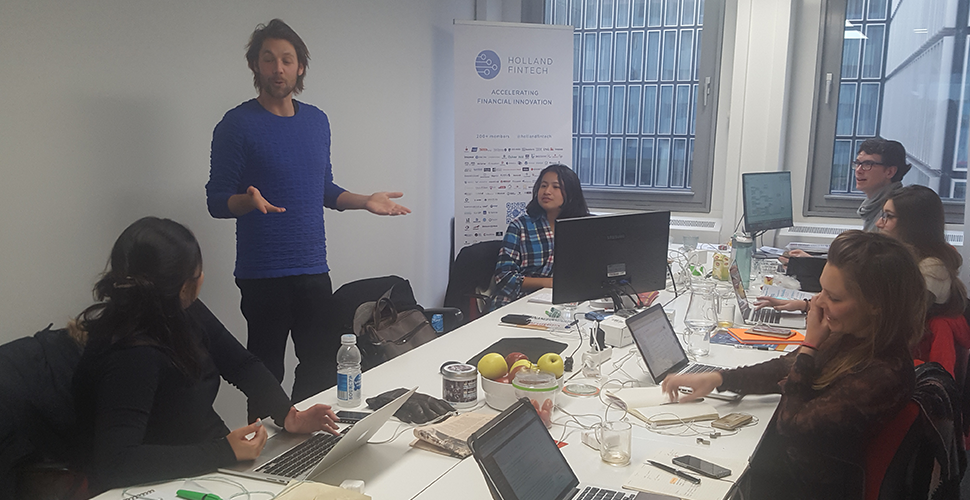Welcome back to my new blog: this is part of a series of blogs where I give inside tips to startups and investors alike.
In this blog, the first of a two-part series, we will provide some tips on the due diligence process for potential startup investments. These tips can be helpful both for startups in the early stages of their venture who are trying to raise funding and for investors who are analysing startup investment deals. This way, startups can learn not to make vital mistakes in their investment proposition, and investors can learn how to identify potential flaws.
In the financial sector, the vital signs that tell you something might be wrong during due diligence are sometimes called ‘red flags’. When an investor reads through a startup’s information memorandum and identifies something that raises a concern, he metaphorically raises a red flag. The topics on which the investors can raise a red flag are extensive, but it comes down to this: investors will walk away from a potential investment if they have too many concerns or have raised too many red flags. Always remember that investors will get many business propositions from many different startups. So if one startup’s potential doesn’t appeal to them, then another’s will. We live in a world where the demand for capital by startups is higher than what is available.
This blog focuses on online funding rounds for the earliest stages, and on angel investors soon thereafter. But the content of this blog is useful to a broad range of startups.

Questions to ask in the due diligence process for potential startup investments
1. Is the risk of the entrepreneur aligned with that of the investors?
As an entrepreneur, your risk (and reward) has to be aligned with that of the investors. There are several different cases where the investor’s and entrepreneur’s risk are not properly aligned and a negative situation ensues.
For example: the startup founder grants him or herself a huge salary. Sometimes the founders previously enjoyed the luxury of high paying jobs at corporates, so they find it difficult to cut back to minimum startup salaries. Although startup founders should be rewarded with increasing stock value arising from the time and energy they put into the startup, they should normally not be rewarded instantly with a high salary. Salary is cash out for the company, and thus not invested in growing the business. In fact, a startup founder enjoying a fairly generous remuneration may be seen as unconvinced of his own venture. If this is the case, the risk shifts towards the investor instead. So, if the company goes down, the founder still enjoyed a good salary and has had a moderate loss, while investors have lost all their money. This is not how it should work. The consequences – in case of a failed company – should be shared equally.
Sometimes, startup founders have difficulties estimating what an appropriate salary is. Ask fellow startup founders who are in the same phase and sector as you and then discuss this with your investors. Write down your maximum allotted salary in your investment memorandum, and be willing to have it subjected to outside review if you increase your salary.
2. What does the cap table look like?
The cap table is the overview of all shareholders of the company. This should be as clean as possible, meaning: a) try to avoid having many different smaller shareholders, and b) try to avoid having many different share classes. Follow-up investors, like VCs, prefer to have the cap table as clean as possible because dealmaking will be easier. For a startup, having fewer investors means less hassle, both when organizing shareholder meetings and when corporate decisions have to be made on which shareholders must vote.
It is also important to clearly indicate if options, convertibles, warrants, or other financial instruments – which can have an impact on the cap table – are present. A well-known example is the employee stock option. This is an option which is granted to certain key employees of the startup in order to get their personal financial incentives to align with that of the startup. These employee stock options are a promise to issue shares to the employee when they are exercised. If this happens, they will affect the cap table. The new shares will cause a dilution of the existing shares. So investors should be well aware of what you are doing with employee stock options.
Of course, there are different share classes which have different qualities. Next to common stock, there are preferred stocks, which might be strengthened with an anti-dilution, liquidation preference, etc. Please read my blog on this. These preferred shares can impact the investment decision of a new investor, since the additional value to those investors might be coming from the others.
3. Who owns the stock?
Are the founders who hold the shares still working for the company? In other words: does the management get its incentives from shares, which is good, and do the shareholders still commit their time, which is also good?
If the founders of early-stage startups are not on board as managers, and daily management is done by employees who only own a fraction of the shares, it can be considered a red flag. In an early stage startup, founders normally are working day and night to make their startup a success. Later on, whether it be in the startup’s scale-up phase or after a number of years, it is common for founders to step back a little and let managers have a little more control. However, when the startup is still its early stages, the question that comes to mind is: why are the founders not working in the management of the company?
If founders are not fully dedicating their time to the company, it could be perceived by investors that the founders do not have confidence in their own startup or that they do not want to bear the risk themselves. If startup founders step back and appoint management to run the startup, those managers should usually have a substantial portion of shares. It is all a matter of judgment: but these can be red flags.

4. Is there a startup legacy?
Startup teams regularly fall apart at the beginning, and this is not necessarily a bad thing. Sometimes that is just part of finding a strong stable formation. However, the process which follows when founders leave needs to be considered carefully. Ideally, the founding team has prepared for this right from the moment the venture begins. When one of the founders decides to leave, there is usually a lot of emotion involved. That’s not always a good environment to discuss with the leaving founder what happens to his shares. A negative scenario could be that a founder who has a large percentage of shares, let’s say between 20% and 50%, leaves and wants to keep a large part of the shares, or even everything he owns. This means that the other founders are left working hard to increase the former founder’s shareholder value while he is not doing any work for it. That can breed resentment. Furthermore, potential investors might not want to invest in a company where such a big dispute is still going on.
Luckily, these problems can be prevented at the formation of the startup. A good shareholder’s agreement – containing a good leaver bad leaver clause with a reverse vesting scheme – should be set up from the beginning. These clauses will make sure that even during an emotionally difficult departure of a co-founder there can be a sensible settlement of what happens to their shares. The best time to conclude the shareholder’s agreement is: as soon as possible, and certainly well before any troubles begin. Please read about some examples in my blog: shareholders’ agreement part 2.
5. No one wants to be the first
When conducting an online funding round, investors can often see if other investors have invested already – and sometimes even the allocated investment amount. If the investor is not that familiar with the proposition and sees that nobody else has invested, eyebrows are raised.
It is generally expected that startup founders raise part of the funding via their own network. If no one from the startup’s inner circle has invested, then why would an outsider do so? Investors love when others have already invested, especially if that group contains experienced investors!
Let’s clarify this with an example. When you walk down a street with a lot of bars on a Friday night looking for a place to have a drink and you have the choice between bars which are completely empty and bars which are crowded or even have a waiting line in front of it: Where do you go? Exactly, the bars that are buzzing with people! It works the same with investors. No one wants to be the first one in; everybody wants to be part of a success story.
6. What is the funding history of a startup?
Has the startup very recently completed a funding round? What financial instruments were used and under what conditions? Did the investors from the last round get a far better deal? These preferential terms can be justified if those investors bring certain benefits, like special skills, a network of investors, or a strong mentor relationship from the start. This doesn’t have to be a red flag, per se, but do try to find out how this last deal was structured.
For any startup, the golden rule is to treat all investors equally. To some extent, this is even dictated by law. In short, do not put yourself in a risky position by making different deals left and right with different investors. And be transparent, always.
7. What funding options does a startup have?
This is similar to the previous point. When you have depleted all funding options from your own network and have to complete an online investment round because you have no other option, it can be difficult to convince other investors to buy in. In some cases, startup founders wait until the very end to look for alternative sources of investment. First, they burn up their own money, then their network’s, and when the runway is just a few months, they begin looking for alternatives. Unfortunately, it takes some time to convince potential investors to join. If the startup’s options are limited then that could reduce its perceived attractiveness.
In general, a relationship needs to be established and maintained over a longer period. This is key: investors first need to get to know the startup founders before they commit capital. If you find investors who have indicated that they want to invest from the get-go, the startup founder might consider bringing them onboard early on. If you follow this route you will have investors that are already in the business when the startup does need an additional round of funding.
Some startup founders are hesitant about doing this because it is often difficult to negotiate a strong valuation with investors in the early stages. Others fear that investors might take up too much of their time or be very demanding. A solution for this can be getting investors to invest via convertibles. This means that the startup does not have to give up equity straight away, and the valuation can be settled when your idea has more track record behind it. The risk of investors taking up too much time can be fixed in other ways. The main way to tackle this is to find investors that you enjoy working with, and that give you good energy. Ideally the startup looks forward to meeting with the investors, and the other way around .. really, that exists.

Sign up for Leapfunder to discover promising new startups:

